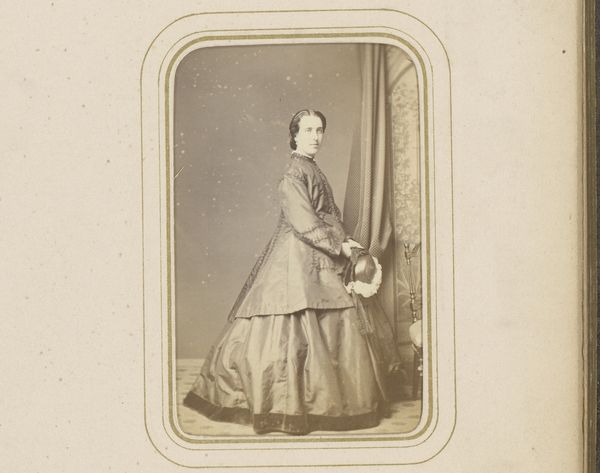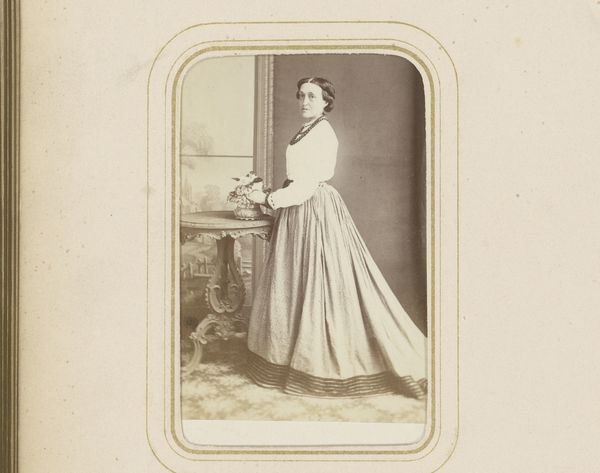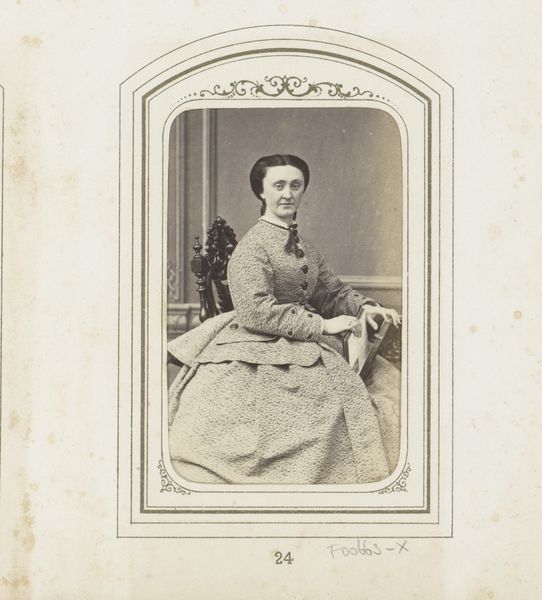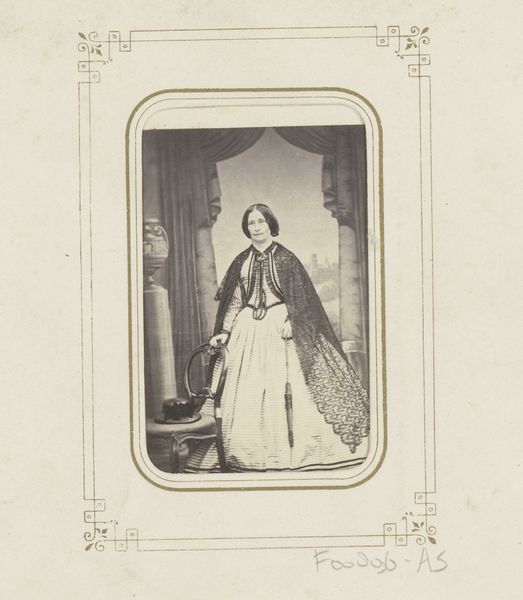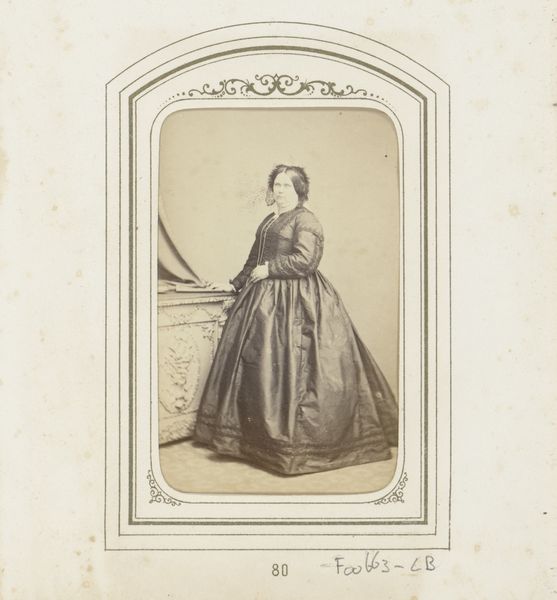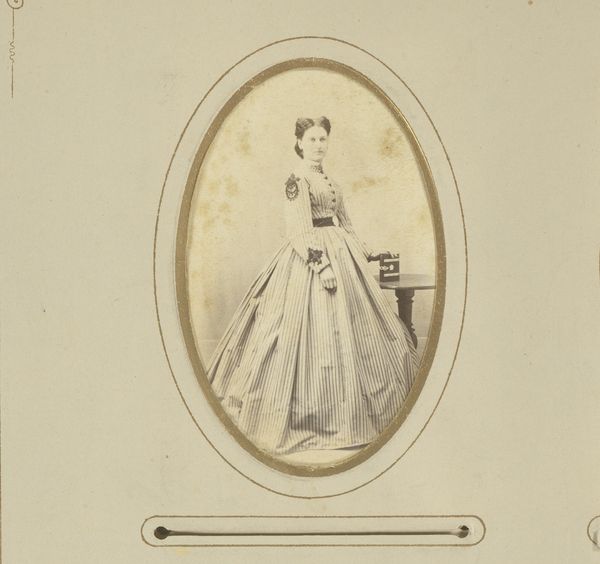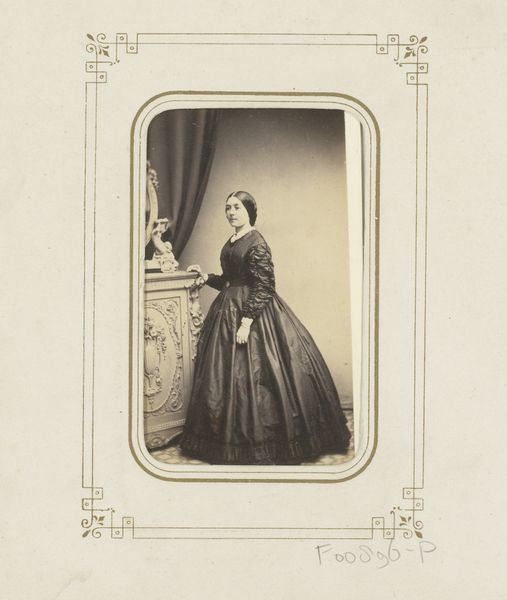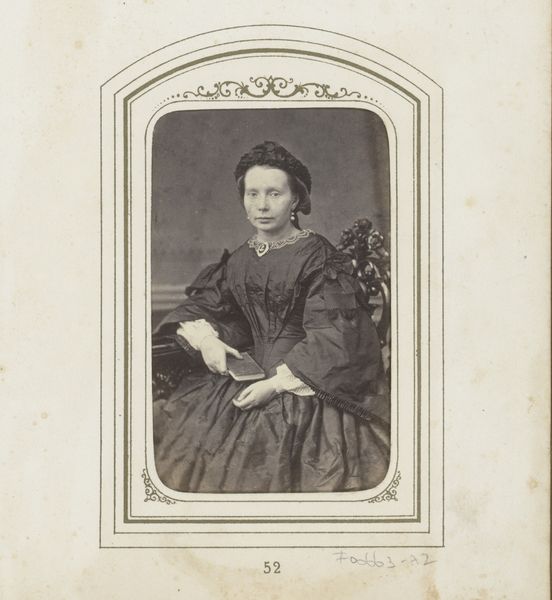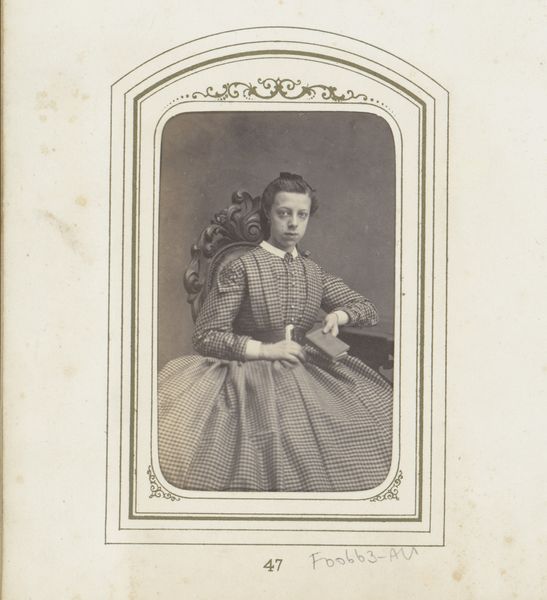
photography, photomontage
#
portrait
#
photography
#
historical photography
#
photomontage
#
19th century
#
genre-painting
Dimensions: height 85 mm, width 53 mm
Copyright: Rijks Museum: Open Domain
Curator: Here we see a "Portret van een staande vrouw met hoed," or "Portrait of a Standing Woman with Hat," created sometime between 1860 and 1870 by Lambertus Martinus Delboy, crafted with photomontage techniques. It’s quite striking. Editor: The composition feels rather stiff to me. A frontal, almost symmetrical pose, dominated by the texture of that extravagant lace, and the light…well, it flattens everything. Curator: Ah, but that perceived "stiffness" is itself symbolic! In the Victorian era, formal portraiture signified respectability and status. The elaborate attire whispers volumes about her place in society and this medium grants accessibility that painting couldn’t provide for some at the time. Editor: Agreed. But I can't ignore how the dress nearly swallows her! All of this volume below compared with the rather restrained presentation of the head, it nearly becomes another form entirely. Curator: Note the hat, however. It's deliberately held, drawing our eye. A hat, more than mere fashion, often denoted societal role and marital status. The portrait hints at social aspirations, capturing not just an image but an identity being carefully constructed. Editor: Perhaps. But is this ‘construction’ the intent of the sitter, or imposed by Delboy's aesthetic? Even within the somewhat limiting structure of the time, one can imagine a dynamic pose, a more assertive interplay of shadow and light, disrupting this controlled composure. Curator: Think about how the photographic portrait, during this time, was a democratization of sorts. Suddenly, those without the wealth to commission paintings could still have their likeness preserved. This itself speaks to a society undergoing change. Editor: A visual code, then, layered into the sepia tones. I remain struck by how much these portraits, even while aspiring to capture something timeless, so distinctly ‘date’ themselves, and us along with it. Curator: Precisely, time does impact and influence even photographic art. Thanks for offering that nuanced perspective. Editor: My pleasure. It helps to try seeing both what is visible and what those images deliberately hide.
Comments
No comments
Be the first to comment and join the conversation on the ultimate creative platform.
